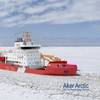1894- President authorized the Revenue Cutter Service to enforce the Paris Award, which was concerned with the preservation of fur seals in Alaska.
1917- The United States declared war on Germany and joined the Allied Powers in World War I. The Coast Guard, which at that time consisted of 15 cruising cutters, 200 commissioned officers, and 5,000 warrant officers and enlisted men, became part of the U. S. Navy by Executive Order. The cutters immediately reported to their assigned naval districts for duty. Cutters provided armed parties to seize German ships that had been interned in U.S. ports. Coast Guard aviators were assigned to naval air stations in this country and abroad. One Coast Guardsman, First Lieutenant (Eng.) Charles E. Sugden, USCG, commanded the Naval Air Station at Ile Tudy, France, and was later awarded the French Chevalier of the Legion of Honor. Another officer, Second Lieutenant (Eng.) Philip B. Eaton, USCG, commanded Chatham Naval Air Station and he piloted one of two HS-1 seaplanes that attempted to bomb and machine gun a surfaced U-boat off the coast of New England after the U-boat had shelled a tug and barges four miles off Cape Cod. Eaton's bombs failed to explode, however, and the U-boat escaped. One cutter, CGC Tampa, was lost in action with all hands while on convoy duty in British waters.
1949- A US Coast Guard H03S-1 helicopter completed the longest unescorted helicopter ferry flight on record. The trip from Elizabeth City, NC to Port Angeles, WA via San Diego, a distance of 3,750 miles, took 10-1/2 days to complete and involved a total flight time of 57.6 hours.
(Source: USCG Historian’s Office)













